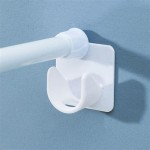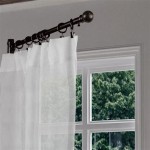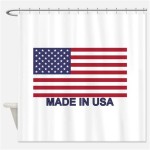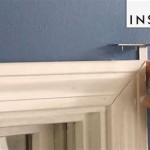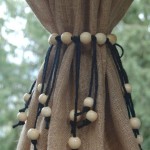Curtain Trim By The Yard: A Comprehensive Guide
Curtain trim, purchased by the yard, represents a versatile and essential element in interior design, allowing for the customization and enhancement of window treatments and various other home décor projects. This method of acquisition provides flexibility in quantity and application, enabling designers and homeowners to tailor embellishments to specific needs and aesthetic preferences. Understanding the variety of trim types, their applications, and the factors influencing selection is crucial for achieving desired results.
Understanding the Variety of Curtain Trim
The term "curtain trim" encompasses a broad spectrum of materials and designs, each possessing unique characteristics and suitability for different applications. Navigating this diverse landscape requires familiarity with the common types available and their defining features.
Braids, for instance, are a classic choice, typically featuring interwoven strands of yarn or cord. They are available in a wide range of colors, widths, and patterns, making them adaptable to various styles. Braids can add a subtle texture or a bold statement, depending on the chosen design. They are often used along the leading edges of curtains, valances, or as decorative accents on pillows and upholstery.
Fringe offers a more playful and textural element. It consists of loose, dangling strands, which can be made from various materials, including cotton, polyester, rayon, and even beads. Fringe adds movement and visual interest, making it a popular choice for bohemian or eclectic interiors. It can be used to trim the bottom edge of curtains, creating a dramatic and eye-catching effect. The weight and density of the fringe should be considered based on the overall design and functionality of the curtain.
Tassels are another form of trim that provides a decorative and often luxurious touch. They are typically composed of a bundle of threads or cords gathered at one end and hanging free. Tassels can be small and delicate or large and ornate, depending on the desired effect. They are often used as tiebacks for curtains, adding a sophisticated detail to the window treatment.
Pom-poms offer a whimsical and playful alternative. These small, fluffy balls of yarn or fabric can add a touch of fun to a room. They are particularly popular in children's rooms or in spaces with a casual or bohemian aesthetic. Pom-poms can be sewn onto the edges of curtains or used to create decorative garlands.
Beaded trim provides a glamorous and elegant touch. Strands of beads, which can be made from glass, crystal, or plastic, are sewn onto a fabric backing. Beaded trim adds sparkle and texture, making it a suitable choice for formal or luxurious interiors. It can be used to trim the edges of curtains, valances, or pillows, adding a touch of sophistication.
Gimp braid, a narrow, flat braid, provides a neat and finished edge. It is often used to conceal raw edges or seams, giving a professional look to upholstery and window treatments. Gimp braid is available in a wide range of colors and textures, making it a versatile option for various projects.
When selecting trim, it is essential to consider the overall style and color scheme of the room. The trim should complement the fabric and design of the curtains, enhancing their aesthetic appeal. The weight and texture of the trim should also be considered, as they can impact the drape and functionality of the curtains.
Applications of Curtain Trim: Beyond Window Treatments
While primarily associated with enhancing curtains, trim purchased by the yard extends its versatility to a multitude of interior design applications. Its adaptable nature allows for creative embellishment across various textile-based projects, adding a personalized touch and elevating the overall aesthetic.
One common application is in upholstery. Trim can be used to define the edges of sofas, chairs, and ottomans, adding a sophisticated and tailored appearance. Braids, gimp, and decorative cords are often employed to highlight the contours of furniture, accentuating its shape and style. Furthermore, trim can be incorporated into custom-made cushions and pillows, providing a cohesive design element that ties together the entire room.
Beyond furniture, trim finds practical use in bedding ensembles. It can be applied to the edges of duvet covers, pillow shams, and bed skirts, adding visual interest and a touch of luxury. Coordinating trim with the existing color palette and patterns of the bedding can create a unified and harmonious look. For example, a delicate lace trim can soften the edges of a crisp linen duvet cover, while a bolder, patterned trim can inject personality into a more minimalist design.
Home décor projects also benefit from the addition of trim. Custom lampshades can be embellished with braids, fringes, or beaded trim, transforming them into unique and eye-catching focal points. Table runners and placemats can be enhanced with decorative borders, adding a touch of elegance to dining settings. Even simple projects like picture frames or mirrors can be given a new lease on life with the application of trim, creating personalized pieces that reflect individual style.
Clothing and accessories also represent a viable application for curtain trim. The same types of trim used for home décor can be incorporated into garment design, adding embellishments to dresses, skirts, jackets, and handbags. This allows for the creation of unique and customized fashion pieces that stand out from mass-produced items. Trims can be used to define necklines, cuffs, and hemlines, adding a decorative flourish to garments. Accessories like hats, scarves, and shawls can also be enhanced with the addition of trim, adding a touch of personality and style.
When using curtain trim for applications beyond window treatments, it is crucial to consider the durability and washability of the chosen material. Items that are frequently used or require regular cleaning should be embellished with trim that can withstand wear and tear. Additionally, the method of attachment should be carefully considered to ensure that the trim is securely fastened and does not detach easily.
Factors to Consider When Selecting Curtain Trim By The Yard
Choosing the right curtain trim by the yard involves careful consideration of several factors, ensuring that the selected trim complements the existing décor, meets the project's functional requirements, and aligns with the desired aesthetic. Overlooking these factors can lead to unsatisfactory results and a mismatch between the trim and the overall design.
The first and foremost consideration is the material composition of the trim. Different materials offer varying levels of durability, texture, and visual appeal. Natural fibers, such as cotton, linen, and silk, offer a soft and luxurious feel, but may require more delicate care. Synthetic fibers, such as polyester and rayon, are typically more durable and resistant to fading and shrinking, making them a practical choice for high-traffic areas or items that require frequent washing. The choice of material should be guided by the intended use of the trim and the level of maintenance required.
Color and pattern are equally important considerations. The chosen trim should complement the color scheme and patterns of the surrounding textiles and décor. Coordinating colors can create a cohesive and harmonious look, while contrasting colors can add visual interest and create a focal point. The pattern of the trim should also be considered, ensuring that it complements the existing patterns in the room. A busy pattern combined with a similarly busy fabric can create a cluttered and overwhelming effect. Simpler patterns or solid colors often provide a more balanced and sophisticated look.
The width and scale of the trim should be proportional to the size of the item being embellished. A narrow trim may get lost on a large curtain panel, while a wide trim may overwhelm a small pillow. The scale of the trim should also be considered in relation to the overall design. A delicate trim may be appropriate for a feminine or romantic style, while a bolder trim may be more suitable for a modern or contemporary style.
The method of attachment is another important factor to consider. Trim can be attached by sewing, gluing, or ironing. Sewing is the most durable method of attachment, but it requires more skill and time. Gluing is a faster and easier method, but it may not be as durable. Iron-on trim is a convenient option, but it may not be suitable for all fabrics. The choice of attachment method should be guided by the type of trim, the type of fabric, and the desired level of durability.
Finally, the cost of the trim should be considered. Trim can range in price from inexpensive to very expensive, depending on the material, design, and manufacturer. It is important to set a budget before shopping for trim and to compare prices from different sources. Purchasing trim by the yard allows for greater control over the quantity and cost, enabling more precise budget management compared to pre-packaged trim options.

Fretwork Jacquard Trim Upholsterytrim Decorative Fabric For Curtains Curtain By The Yard Etsy

By The Yard Wide Trim 4 Inches Greek Key Tape Curtain Drapery Decorative Embroidery Ribbon Trims Border Etsy

Geometric Curtain Border Trim 3 5 Fabric For Curtains By The Yard Drapery Tape Teal Aqua Blue Green Etsy

Curtain Border Trim By The Yard Teal Tape Drapery Boho Fabric For Curtains Embroidered Etsy

Leaf Curtain Trim Tape Decorative Fabric For Curtains Drapery By The Yard Blue Green Beige Etsy

Light Green Collection Curtain Trim Jacquard Embroidery Tape Decorative Fabric For Curtains Drapery Sold By The Yard Etsy

Blue Collection Imitated Silk Curtain Trim By The Yard Jacquard Border Drapery Upholstery For Curtains Etsy

Embroidery Drapery Trim Tape 2 9 Sewing Fabric For Curtains Ribbon Curtain By The Yard Etsy

Trim Tape Ea271 06 2 Yard Remnant

Curtain Border Trim By The Yard Teal Tape Drapery Boho Fabric For Curtains Embroidered Etsy



